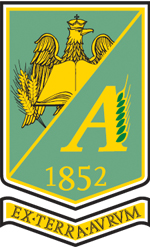Published in Scientific Papers. Series A. Agronomy, Vol. LX
Written by Umesh MADAR, Thangadurai DEVARAJAN
Corypha umbraculifera L., is a monocarpic, endangered plant and show endemism to India and Sri Lanka. Natural population of this species occurs in semi-wild conditions in Karnataka and Kerala regions of Western Ghats, India and in addition it is found as a cultivated ornamental plant in other parts of India. Simple sequence repeat (SSR) analysis was used to determine the genetic diversity and relatedness among 14 C. umbraculifera populations collected from different locations within Karnataka, India. Among the 10 SSR primer pairs used for the study, 9 could amplify polymorphic SSRs from all the 14 populations. 168 alleles were detected at 22 loci ranging from 1 to 14 alleles, with average score of 7.63 alleles per locus. The statistical analysis of the results revealed that allelic frequency ranged from 7.1% to 100% with a mean of 54.51%. Polymorphism of alleles and genetic diversity measured by polymorphic information content (PIC) revealed that PIC of the loci was ranged from 0.23 to 0.83 with an average value of 0.61. The UPGMA-based clustering analysis showed the genetic similarity index ranged from 0.316-0.917. The similarity coefficients were used as input data for cluster analysis performed by a dendrogram construction utility (DendroUPGMA online server, Garcia-Vallve et al., 1999) and similarity matrix was calculated based on Jaccard index. The dendrogram divided the collected 14 populations into 2 major groups as the first group, i.e. cluster A included 7 populations, viz. Dndi, Manr, Sond, Nari, Bakl, Mtrd and Bltd, whereas cluster B included 7 populations, viz. Yana, Ytgd, Chpi, Honr, Bdag, Uppi and Udne. Thus, results indicated the presence of genetic diversity among the plant samples. These results suggest that SSR markers are efficient for determining genetic diversity and relatedness in C. umbraculifera. The present study endorses further the use of several other molecular marker systems that will help in germplasm characterization of semi-wild populations of C. umbraculifera for further conservation and sustainable utilization.
[Read full article] [Citation]




